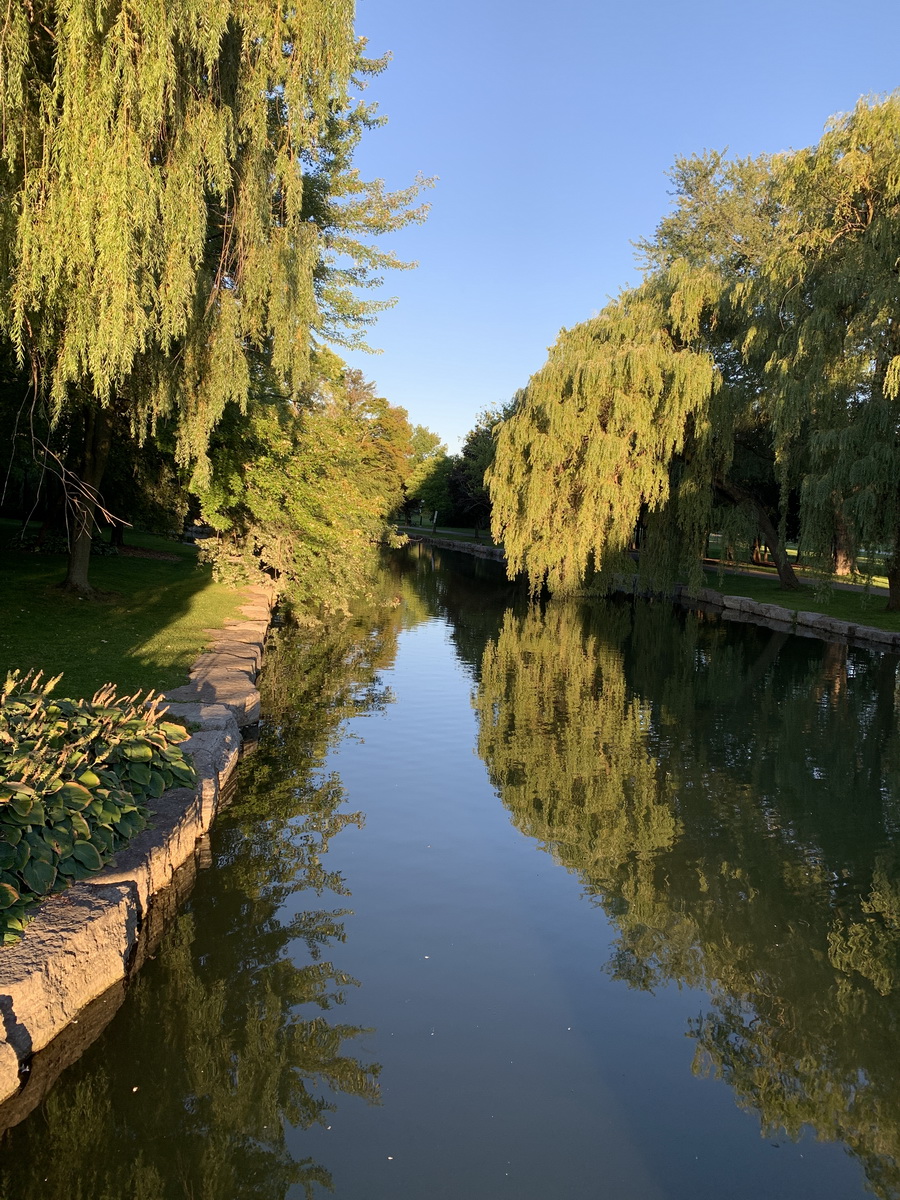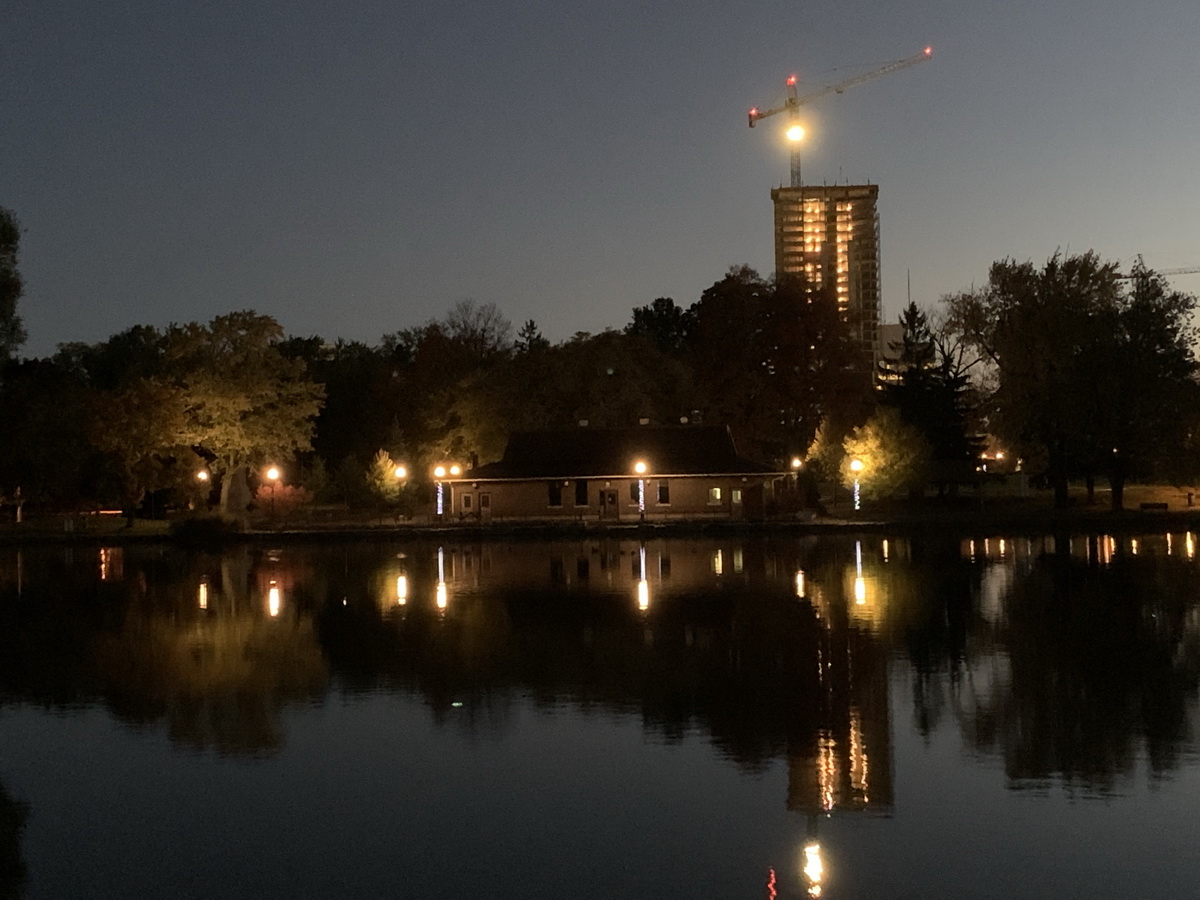Posts: 4,328
Threads: 1
Joined: May 2015
Reputation:
180
(08-27-2020, 01:49 AM)taylortbb Wrote: The OSM data is how Flight Simulator ended up with a 212 storey house in suburban Melbourne.
https://www.engadget.com/flight-simulato...45509.html .
Now that’s FAR (Floor Area Ratio) out!
Posts: 7,579
Threads: 36
Joined: Jun 2016
Reputation:
196
(08-27-2020, 01:49 AM)taylortbb Wrote: (08-26-2020, 10:08 PM)danbrotherston Wrote: Ignoring all that, the trees and foliage seem to look better in the Microsoft image, which makes sense I think they've focused on that a lot.
I think the major reason things like that look better is that Microsoft wasn't going for a fully accurate depiction of the city. Flight Simulator took the building shape data from Open Street Maps (which doesn't have Google's resources), and then just applied (likely automatically) plausible textures. The trees are likely also a high quality tree model, placed plausibly.
Google Maps textures everything with real satellite photography, and attempts to accurately capture what trees exist in the real world. Makes sense for the different use case, but results are unsurprisingly totally different. Looking good vs accuracy.
The OSM data is how Flight Simulator ended up with a 212 storey house in suburban Melbourne.
https://www.engadget.com/flight-simulato...45509.html .
I believe they used Bing Maps for much of the geometry and textures, it has the same 3D layer, generated in a similar manner to Google Maps. I am not sure to what extent they used OSM data, which has no 3D geometry information or satelite textures.
Yes, clearly the purpose is different, but it doesn't change the fact that Google Maps building geometry is far more accurate than Microsoft's. And they were indeed going for accuracy on building geometry in this game. In iconic areas they actually manually improved many of their building geometries.
Posts: 2,002
Threads: 7
Joined: Sep 2014
Reputation:
124
Does anyone know how Google Maps generates their 3D models? Plausibly I can think of a few options. Air photos, especially with precise positioning, can be used to determine 3D geometry. Stereoscopic techniques have been used to determine topography for a long time, but with better software, better imaging, and precise positioning information for the camera, I can imagine that software could produce very good models. That said, some of the models I've looked at have features that seem more detailed than I would intuitively believe they could get just from stereoscopy. I kind of wonder if the Streetsview cars (or maybe even the air photo aircraft) are outfitted with lidar. That could very plausibly get the finer detailing I've noticed in some of their models.
Posts: 838
Threads: 10
Joined: Jul 2017
Reputation:
45
Streetview cars definitely have lidar, it's part of the Waymo auto piloting technology. I have no idea whether or not or how that data is integrated into Google Maps, but they are collecting it.
Posts: 7,579
Threads: 36
Joined: Jun 2016
Reputation:
196
(08-27-2020, 08:17 AM)jamincan Wrote: Does anyone know how Google Maps generates their 3D models? Plausibly I can think of a few options. Air photos, especially with precise positioning, can be used to determine 3D geometry. Stereoscopic techniques have been used to determine topography for a long time, but with better software, better imaging, and precise positioning information for the camera, I can imagine that software could produce very good models. That said, some of the models I've looked at have features that seem more detailed than I would intuitively believe they could get just from stereoscopy. I kind of wonder if the Streetsview cars (or maybe even the air photo aircraft) are outfitted with lidar. That could very plausibly get the finer detailing I've noticed in some of their models.
(08-27-2020, 09:20 AM)robdrimmie Wrote: Streetview cars definitely have lidar, it's part of the Waymo auto piloting technology. I have no idea whether or not or how that data is integrated into Google Maps, but they are collecting it.
I have wondered about this a great deal. Given that they have accurate geometry for the rooves of buildings, they must be using more than just streetview vehicles...although using the street view vehicles, it is probably possible to build an accurate high resolution street level world model, which also has very interesting use cases.
I think it would be interesting if they had a machine learning model capable of turning images of different angles of a building into a 3D model. I feel like that should be possible (our brains do it), but I am not sure what kind of accuracy you would get, and I suspect it is not what they are actually doing.
Posts: 10,275
Threads: 65
Joined: Sep 2014
Reputation:
296
Another random photo from my favourite park.

Posts: 1,515
Threads: 13
Joined: Aug 2014
Reputation:
123
(08-27-2020, 08:06 AM)danbrotherston Wrote: I believe they used Bing Maps for much of the geometry and textures, it has the same 3D layer, generated in a similar manner to Google Maps. I am not sure to what extent they used OSM data, which has no 3D geometry information or satelite textures.
If you look at the article I linked, https://www.engadget.com/flight-simulato...45509.html , it's pretty clear they're using OSM data to create the buildings. It's definitely possible this was blended with Bing data, but clearly data as significant as height is coming from places other than measurement.
Posts: 4,392
Threads: 15
Joined: Aug 2014
Reputation:
121
(08-27-2020, 08:17 AM)jamincan Wrote: Does anyone know how Google Maps generates their 3D models? Plausibly I can think of a few options. Air photos, especially with precise positioning, can be used to determine 3D geometry. Stereoscopic techniques have been used to determine topography for a long time, but with better software, better imaging, and precise positioning information for the camera, I can imagine that software could produce very good models. That said, some of the models I've looked at have features that seem more detailed than I would intuitively believe they could get just from stereoscopy. I kind of wonder if the Streetsview cars (or maybe even the air photo aircraft) are outfitted with lidar. That could very plausibly get the finer detailing I've noticed in some of their models.
Having studied remote sensing to a good degree, this is definitely LIDAR, likely scanned from a light aircraft. They take photos at the same time so that buildings and other objects get accurately 'skinned'.
It's resource-intensive, which is why you'll only see it over cities and other major areas of interest.
Posts: 2,002
Threads: 7
Joined: Sep 2014
Reputation:
124
09-02-2020, 11:54 AM
(This post was last modified: 09-02-2020, 11:54 AM by jamincan.)
I took this early Saturday morning on the Peel Street bridge. This part of the Grand River is one of my favourite spots in the Region.
![[Image: ACtC-3fSrIvUGGlENqSK9ZSiCdcroV0RbjBIOzH_...authuser=0]](https://lh3.googleusercontent.com/pw/ACtC-3fSrIvUGGlENqSK9ZSiCdcroV0RbjBIOzH_N-uvkgMsCDB63E6bpEQqdbuon1NiEHSJ6xmYTQExxNr4NkkGOuO0HvNj_mau6iyZsgcuj9OIeHPunigUKGLtywvcAi1UHOFL7waY-wt8NURylBh5GNUd=w687-h915-no?authuser=0)
You can also get a fantastic overlook just down the road on Jigg's Hollow Road where it runs closest to the river. I don't have a good photo of it, but if you go at the right time of year, the meadow/pasture along the river is full of wildflowers and absolutely stunning. https://www.google.ca/maps/@43.5814637,-...312!8i6656
Posts: 1,700
Threads: 3
Joined: Oct 2014
Reputation:
128
Posts: 749
Threads: 13
Joined: Oct 2015
Reputation:
46
Not a great shot from my phone, but I went to trash mountain for the first time. You get a great skyline view from the top. Can you count all the cranes?

Posts: 3,829
Threads: 62
Joined: Jul 2015
Reputation:
192
09-30-2020, 10:30 AM
(This post was last modified: 10-24-2020, 06:56 AM by ac3r.)
We do have quite the skyline here...but since it's divided up between uptown and downtown, it's tricky to capture it all at once. Here's uptown and the university area at sunset by Dave Whiteside: https://twitter.com/dave__whiteside/stat...6914584576
![[Image: J7PEdHB.jpg]](https://i.imgur.com/J7PEdHB.jpg)
Posts: 2,865
Threads: 3
Joined: Mar 2015
Reputation:
95
That's a great picture. And to think 10 years ago, almost nothing on the Waterloo side. Now look at it. Wow.
Posts: 10,275
Threads: 65
Joined: Sep 2014
Reputation:
296
Victoria Park: Cranes at dawn

Victoria Park: Fall trails

Posts: 1,313
Threads: 22
Joined: Apr 2016
Reputation:
102
|




![[Image: J7PEdHB.jpg]](https://i.imgur.com/J7PEdHB.jpg)
